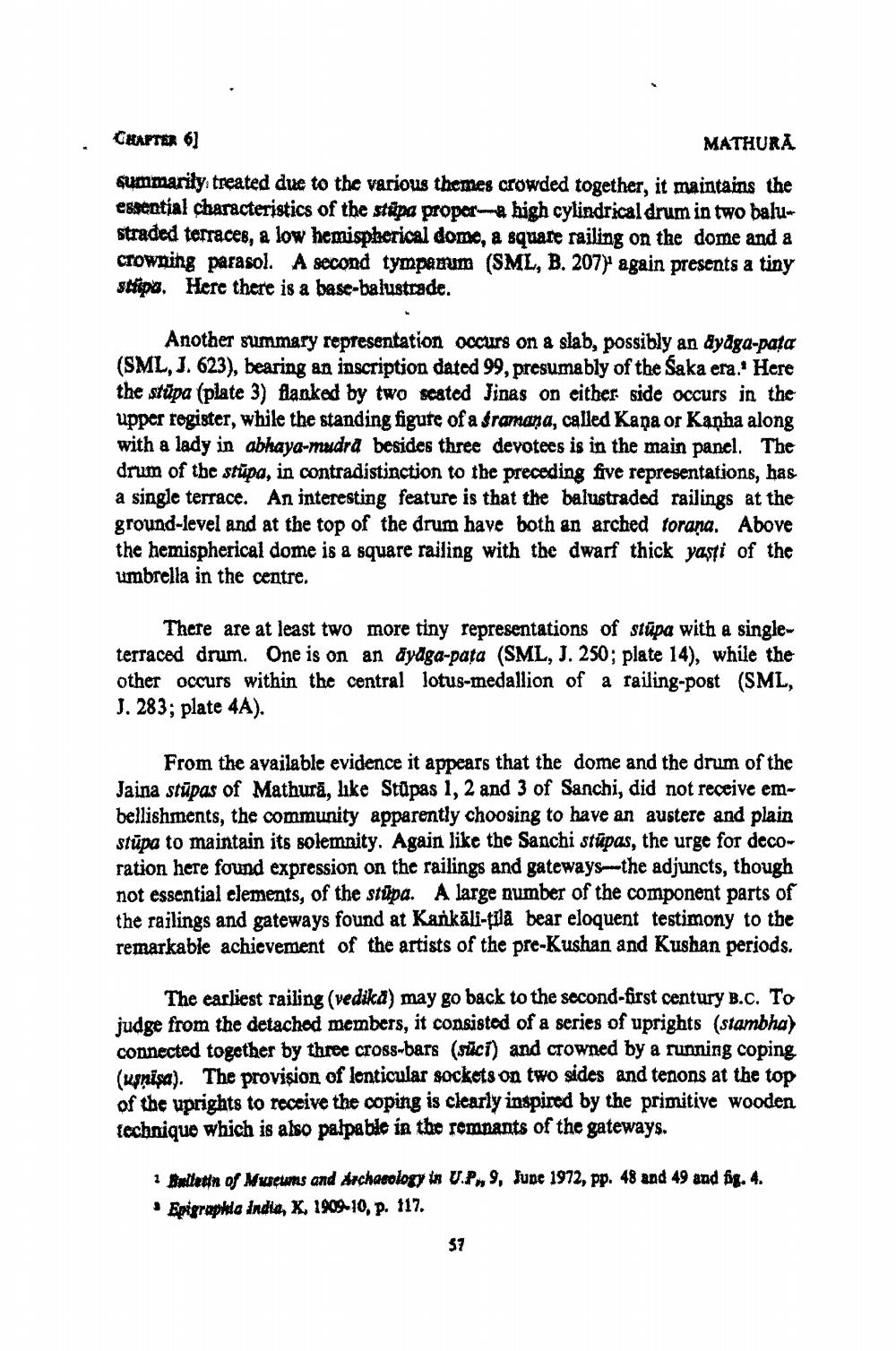________________
CHAPTER 61
MATHURA
summarily treated due to the various themes crowded together, it maintains the essential characteristics of the stupa propora high cylindrical drum in two balustraded terraces, a low hemispherical dome, a square railing on the dome and a crowning parasol. A second tympamum (SML, B. 207) again presents a tiny stipa. Here there is a base-balustrade.
Another summary representation occurs on a slab, possibly an dyðga-pata (SML, J. 623), bearing an inscription dated 99, presumably of the Saka era.' Here the stūpa (plate 3) flanked by two seated Jinas on either side occurs in the upper register, while the standing figure of a framana, called Kapa or Kanha along with a lady in abhaya-mudra besides three devotees is in the main panel. The drum of the stūpa, in contradistinction to the preceding five representations, has a single terrace. An interesting feature is that the balustraded railings at the ground-level and at the top of the drum have both an arched forana. Above the hemispherical dome is a square railing with the dwarf thick yasti of the umbrella in the centre.
There are at least two more tiny representations of stupa with a singleterraced drum. One is on an ayaga-pata (SML, J. 250; plate 14), while the other occurs within the central lotus-medallion of a railing-post (SML, J. 283; plate 4A).
From the available evidence it appears that the dome and the drum of the Jaina stūpas of Mathurā, like Stūpas 1, 2 and 3 of Sanchi, did not receive embellishments, the community apparently choosing to have an austere and plain stūpa to maintain its solemnity. Again like the Sanchi stūpas, the urge for decoration here found expression on the railings and gateways the adjuncts, though not essential clements, of the stūpa. A large number of the component parts of the railings and gateways found at Kankāli-fila bear eloquent testimony to the remarkable achievement of the artists of the pre-Kushan and Kushan periods.
The earliest railing (vedika) may go back to the second-first century B.c. To judge from the detachod members, it consisted of a series of uprights (stambha) connected together by three cross-bars (suci) and crowned by a running coping (usnisa). The provision of lonticular sockets on two sides and tenons at the top of the uprights to receive the coping is clearly inspired by the primitive wooden Technique which is also palpable in the remnants of the gateways.
Bulletin of Museums and Archaeology # U.P., 9, Jupe 1972, pp. 48 and 49 and fig. 4. • Engrapada India, X, 1909-10, p. 117.




